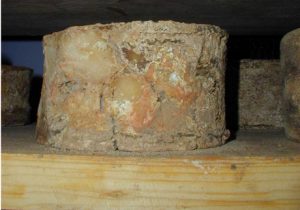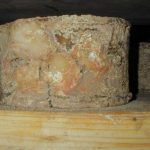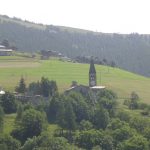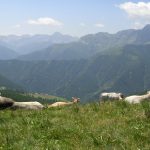
Name
Toma d’Elva
Seal of quality
Typical food-farming product. (PAT)
Description
This is a cheese made from partially skimmed cow’s milk, the cow’s being of Piedmont breed. It is mature cheese, with a thin, light yellow rind, the cheese is yellow of a crumbly texture. The whole cheese has a diameter of 20 cm, with edges of 15 –20 cm.
This cheese which is no longer produced anywhere except, and rarely, by the Elvese Cooperative Diary, milk from several milkings is used, also dependent on the number of heads of livestock owned, or the curds of several days. The cows used being often those raised for veal production. The processed milk, being that with remains after suckling; this milk is stored in the cellar for a few days during which it is subjected to an acidification process. The cream also comes to the surface, and which is only partially separated (only that coming from one or two milkings).
The milk is then heated to a temperature of 35 °C and the curd is added. Then after one hour, it is possible proceed to the breaking up stage in the form of nuts. Subsequently the cheese is broken down into the size of corn grains. The mass obtained (whey plus curd) and if necessary subjected to a short heating period, so as to make the product drier. The curd is then extracted using cloths (although others would usually leave the curd in whey in another container). This cycle is then repeated for 5 – 10 times (ie. 5 processing operations are undertaken on 5 subsequent days, using the milk from two milkings each day, until the quantity of curds obtained are insufficient. The mass of the ‘tomette’ cheeses coming from these operations is then finely crumbled with the hands and then the whole thing is mixed until a single mass is obtained, at this point of fistful of salt is added. The cheese is then deposited in placed inside wooden rounded racks and subjected to pressure. Then follows a maturing period, ranging from a minimum of one month to several years. After the first month the rind cracks and permits the development of certain blue moulds.
Area of production
The area of the Elva commune.


